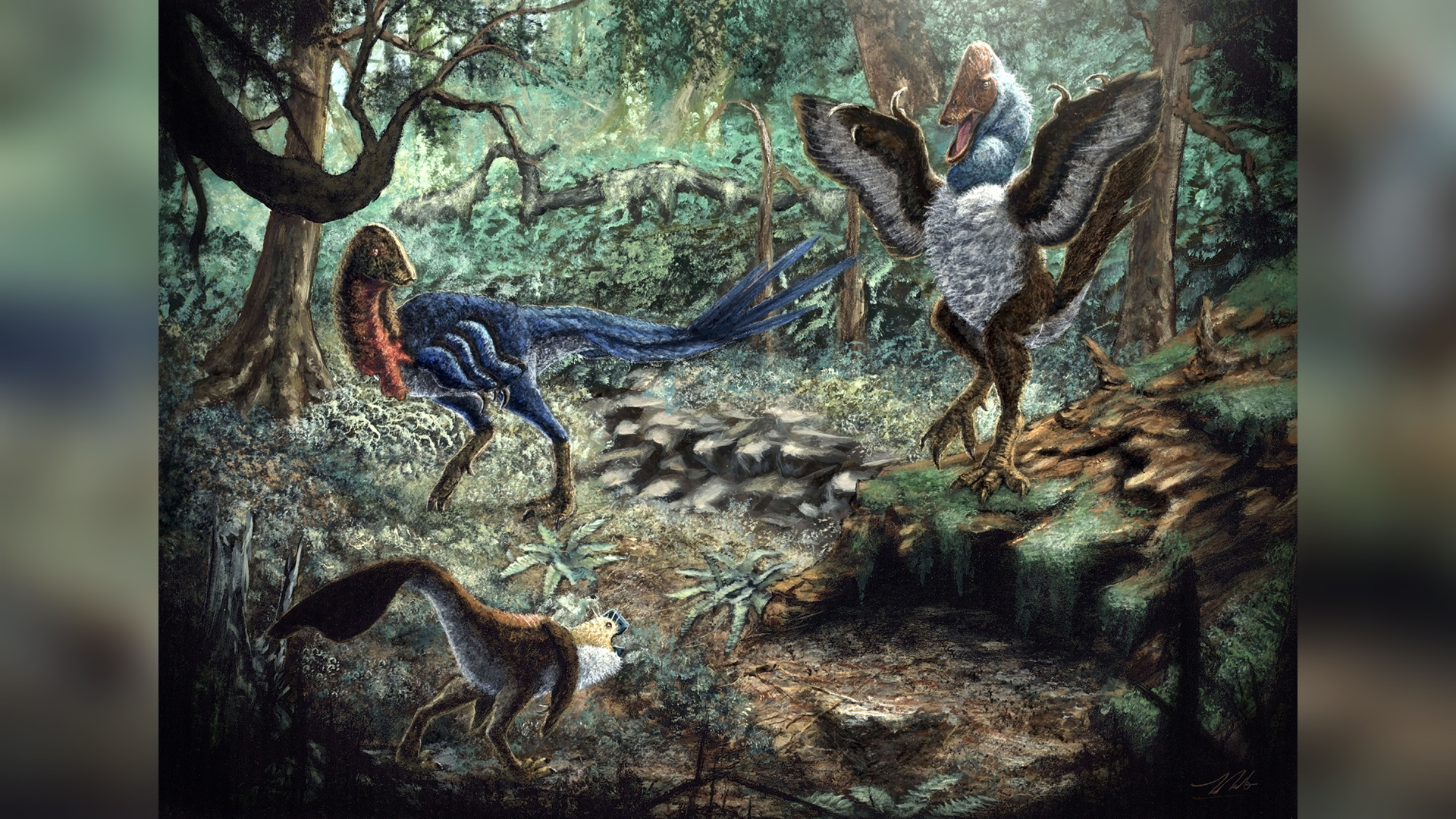'I felt my heart skip a beat': Researcher discovers dinosaur 'chicken from hell' after buying fossil online
A "chicken from hell" dinosaur that lived just before the asteroid struck has been discovered in South Dakota.

A grad student has discovered a never-before-seen dinosaur after he purchased fossils online for a class project.
The beaked beast, nicknamed "pharaoh's dawn chicken from hell," roamed Earth during the late Cretaceous period (100.5 million to 66 million years ago) and hails from the South Dakota section of the Hell Creek Formation (which dates to around 65.5 million years ago), according to a new study, published Jan. 24 in the journal PLOS One.
Study lead author Kyle Atkins-Weltman, a doctoral student at Oklahoma State University, told Live Science he purchased four fossils for $5,000 in 2020 when he couldn't find the bones needed to complete one of his first research projects.
The hind limb fossils were supposed to be from a cassowary-like dinosaur, Anzu wyliei, nicknamed the "chicken from hell." However, when Atkins-Weltman had the fossils scanned, he discovered they were from an unidentified species.
"I felt my heart skip a beat," he said. "I was like, is this really happening to me this early in my career?"
After careful consideration, Atkins-Weltman settled on "Eoneophron infernalis" as the name of the new species. Eoneophron combines the Greek word "eos," meaning "dawn" — identifying the species as ancient — and "Neophron," which is the genus name for Egyptian vultures, also called "pharaoh's chicken." The reference to pharaoh's chicken meant Atkins-Weltman included the chicken nickname of A. wylieii while also honoring his recently deceased pet Nile monitor lizard, named "Pharaoh."
Get the world’s most fascinating discoveries delivered straight to your inbox.
"He was an important part of my life," Atkins-Weltman, who has autism, said. "He was an emotional support animal, and he helped me get through the most difficult parts of being a scientist and dealing with all the stress and everything that comes with it."
The species name "infernalis" is derived from the Latin word for "hell," which is a nod to the Hell Creek Formation and completes the A. wylieii "chicken from hell" reference.
E. infernalis is a close relative of A. wyliei in the Caenagnathidae family and are both oviraptorosaurs characterized by long, slender limbs and toothless beaks. A. wyliei weighed around 440 to 660 pounds (200 to 300 kilograms), while E. infernalis was around 170 pounds (78 kg).
Size isn't the only thing that separates the two dinosaurs. The astragalus and calcaneus ankle bones are fused in both hell chickens, but they are also fused to the tibia on E. infernalis. The study authors speculate that the extra fusing may have enabled the new species to handle stresses better while running.
E. infernalis will be held at the Carnegie Museum of Natural History in Pittsburgh after Atkins-Weltman donated it to the collection. While he was open about purchasing the fossils, he added that the commercialization of fossils is problematic. "Privately held bones are effectively useless to science if they're not accessible," he said.
Studying the bones has helped researchers shed light on the diversity of dinosaurs at the end of the Cretaceous before a catastrophic asteroid strike wiped most of them out. Atkins-Weltman noted there was a decline in dinosaur groups such as tyrannosaurs and lambeosaurines in the last 2 million years of the period — pre-asteroid dinosaur decline is still debated. However, the presence of E. infernalis, A. wyliei, and evidence for a third currently undescribed species living at the same time suggest that decline wasn't mirrored in the caenagnathids.
"This group seemed to have maintained stability and diversity whereas other groups suffered," he said. My guess is they were omnivores and very versatile, switching food sources to survive," he said.

Patrick Pester is the trending news writer at Live Science. His work has appeared on other science websites, such as BBC Science Focus and Scientific American. Patrick retrained as a journalist after spending his early career working in zoos and wildlife conservation. He was awarded the Master's Excellence Scholarship to study at Cardiff University where he completed a master's degree in international journalism. He also has a second master's degree in biodiversity, evolution and conservation in action from Middlesex University London. When he isn't writing news, Patrick investigates the sale of human remains.


